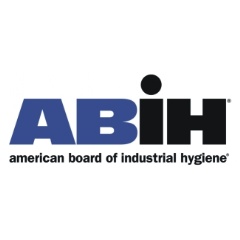Solvents and Protecting Workers from Occupational Exposure Risks
The American Board of Industrial Hygiene® (ABIH®) reminds workers and industry of the need to protect against exposures to potentially hazardous substances.
Certified Industrial Hygienists are uniquely qualified to conduct risk assessments and monitor solvent exposures to protect workers, while also keeping companies in regulatory compliance.
Several years ago, a study published in Neurology by Harvard School of Public Health (HSPH) researchers and colleagues focused new attention on occupational exposures to solvents. The study examined data from over 2,100 retired male utility workers from the French national utility company and assessed their lifetime exposures to fumes from a broad range of solvents.
Researchers found that solvent exposure in the workplace could lead to cognitive difficulties decades later. According to HSPH, “…researchers found evidence of damage to thinking and memory as long as 50 years after exposure. They also found that the men most exposed to solvents, and exposed most recently, suffered the most cognitive impairment.”
In the United States, the Occupational Safety and Health Administration (OSHA) reports that millions of workers are exposed to solvents on a daily basis. The agency states that solvents share many chemical, physical and biological properties warranting national attention that is directed to them as a group. In addition, many solvent groups or individual substances have special properties requiring more specialized control measures.
“Inhalation and skin contact are the most common routes of occupational exposures,” said David Roskelley, CIH® and Chair of ABIH®. “In addition to nervous system concerns discussed in the HSPH study, OSHA also lists reproductive damage, liver and kidney damage, respiratory impairment, cancer and dermatitis as health hazards associated with solvent exposures.”
OSHA addresses occupational solvent exposures with specific standards for general industry, shipyard employment and the construction industry. Certified Industrial Hygienists are uniquely qualified to conduct risk assessments and monitor solvent exposures to protect workers, while also keeping companies in regulatory compliance. Core competencies of the CIH® program include health risk analysis and hazard communication; chemical and biohazards; air sampling and instrumentational analysis; engineering controls and ventilation; and work environments and industrial processes. This knowledge, and the proper use of personal protective equipment can be instrumental in reducing exposure risks to solvents and other potential workplace hazards.
To learn more about the American Board of Industrial Hygiene®, Certified Industrial Hygienist® credential or to locate a CIH® to perform industrial hygiene services, please visit www.ABIH.org, email abih@ABIH.org or call (517) 321-2638.
About the American Board of Industrial Hygiene ®
Since 1960, ABIH®, a not-for-profit corporation, has been the world’s largest organization for certifying professionals in the practice of industrial hygiene. ABIH® is the premier credentialing body responsible for ensuring high-quality certification including education, experience, examination, certification maintenance and ethics enforcement. Currently, more than 6900 people in 32 countries are certified to use the CIH® designation.
( Press Release Image: https://photos.webwire.com/prmedia/12710/208796/208796-1.jpg )
WebWireID208796
- Contact Information
- Paul Cochrane
- President
- Cochrane & Associates, LLC
- Contact via E-mail
This news content may be integrated into any legitimate news gathering and publishing effort. Linking is permitted.
News Release Distribution and Press Release Distribution Services Provided by WebWire.
